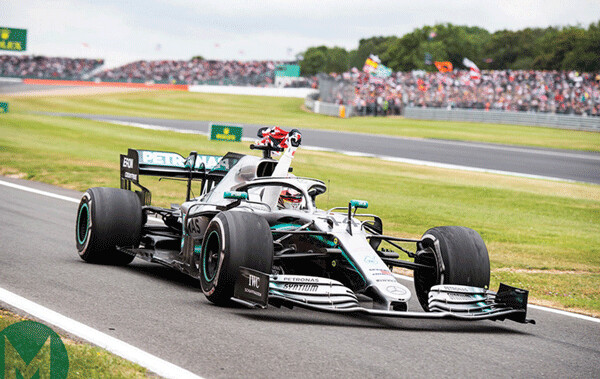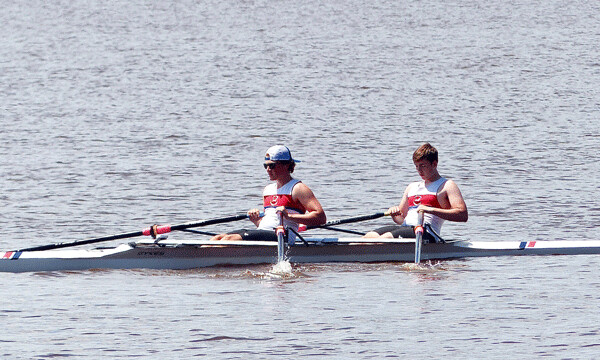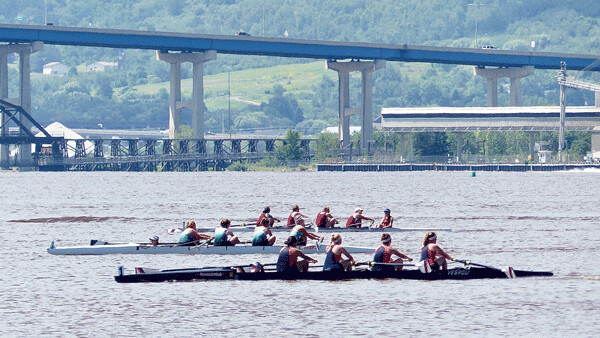News & Articles
Browse all content by date.

At 8 a.m. last Sunday, I turned on the ol’ big screen at the Gilbert Compound and put on the coffee pot, trying to stay quiet enough so mhy wife, Joan, could catch up on a little sleep. Then I ran into one of the neatest dilemmas a sports fan could imagine.
At precisely 8:10 a.m., the Formula 1 pilots were strapped into their missiles on the starting grid at Silverstone for the start of the British Grand Prix. As they drove around the road-racing circuit on their warm-up lap, I hit the clicker and switched over just in time to see Novak Dvokovic and Roger Federer walk down the chute and onto center court at Wimbledon for the men’s championship match.
Two of the most significant sports events in the world, and here they were, both starting at about the same time, and both right there in Great Britain, near London. I do have picture-in-picture, but I didn’t want to cheat on either one, so I left them full size and trusted my clicker finger.
Hometown favorite Lewis Hamilton and Finland’s Valtteri Bottas were the top two qualifiers in their silver Mercedes race cars, ahead of one of the most closely bunched fields of the season, and 141,000 fans were on hand to watch.
On the start, Bottas got the jump on Hamilton and cut sharply to his right, blocking his teammate at Turn 1. Hamilton tried to force his car ahead, but they touched wheels, as Bottas would have none of it. Right behind them, Ferrari’s Charles Leclerc and Red Bull’s Max Verstappen hooked up in an incredible battle, wheel-to-wheel. You watch the action, and you find that the discomfort you feel is because you’ve neglected to breathe. Guess that what “breathtaking” means.
Hit the clicker and there are Djokovic, the No. 1 ranked player in the world, and Federer, the crowd favorite, going back and forth, hooked up in a fantastic duel, each making the other run side to side and exchanging potential winning volleys virtually every shot. It was 6-6, and headed for a tie-breaker. They were trying the new rule this year, where tie-breaks in the first four sets are the usual up-to-7 and you’ve got to win by 2, but if a fifth set goes to tie-break, it can only happen after they reach 12-all, and then they go to 7 and all you have to do is get there to win.
I switched back, and the Grand Prix had reached pit stop stage. The order was jumbled a bit because of those amazing pit stops — four new tires in about 2 seconds, sometimes less! Up front, Hamilton and Bottas raged back and forth, exchanging the lead. Leclerc and Honda-powered Verstappen were in an even tighter battle, gambling repeatedly for a pass and repass by the margin of a couple centimeters. Or less. Verstappen had cut across the track to nudge Leclerc’s car off the track for the decisive winning move in the previous race, and the two were destined for a replay at Silverstone. Verstappen made two or three bids, then tried to pass on the outside, coming up exactly even with Leclerc’s Ferrari, but Leclerc has proven to be a quick learner this year, and he braced himself for a nudge that could only knock Verstappen off on the left edge, as Leclerc pulled ahead.
Sebastian Vettel, still one of the greatest drivers on the circuit, had moved up into contention as well, and he got by both those combatants bh a quick pit exchange and put his Ferrari up to third.
Switch back, quick: Djokovic had jumped ahead early in the tie-breaker, then held off Federer’s determined bid to win the tie-breaker 7-5 and the first set, 7-6.
Changing channels again, Verstappen got free of Leclerc for fourth, and sped up to challenge Vettel for third. Young Max again showed his Honda power was at least the equal of the mighty Ferrari and Mercedes engines, and he made a slick move to pass Vettel on the outside for third place. This time, Vettel came right back up on Verstappen’s tailpipes as then went into a tight turn. Verstappen held his ground and let off, and Vettel, thinking he had set up an inside pass, had no choice but to lock up his brakes. In a big puff of tire smoke, Vettel’s Ferrari smacked the rear of Verstappen’s Red Bull and both of them spun off the track. Both, remarkably, got back on course and resumed the chase, although Vettel suffered enough nose damage to need a pit stop and was relegated to 15th. On top of that, he was hit with a 10-second penalty, to be added to his finishing time.
Oh yeah, the other channel. Federer, who had made a run at Djokovic by rallying to close in on the tie-breaker, carried that momentum with his storied determination into the second set. It really appeared that Djokovic let up a bit, maybe to conserve energy for the long haul, and Federer eased ahead 4-0 and whipped him 6-1 to square the match at a set apiece.
They immediately resumed their dramatic showdown in the third set.
Back to the British Grand Prix. Hamilton got a break when he held off on a pit stop and came in during a caution-flag slowdown for a spinout back in the pack, allowing him to dart in, get tires, and return to the track still up front. He held that edge to the finish, with teammate Bottas second, and Leclerc — who was voted “driver of the race” for his clever moves, gained the third podium spot, ahead of Pierre Gasly, Verstappen’s Red Bull teammate, who, in turn, finished ahead of Verstappen, who was fifth. Vettel wound up 15th.
I couldn’t wait to hear the interviews, because I was back glued to the screen for Djokovic’s resurgent third set, which he ended with another tie-break victory, going ahead 4-1 and holding off Federer 7-4 to win the set 7-6. In the fourth set, Federer seemed re-energized and won 6-4, leaving the two brilliant adversaries 2-2 and going into the fifth set.
Without a doubt, Djokovic was exhausted, and Federer seemed to have an edge, running his foe around the court a bit and repeatedly scoring with drop shots just over the net. Several times he seemed to take control, only to have the tenacious Djokovic battle back and somehow summon the grit to stay even. Federer had the chance for the match in the fifth set, gaining a 40-15 edge on his serve. Both times, Djokovic rallied with what seemed to be his last ounce of moxie to force the tie-break.
Again, Federer seemed slightly fresher, and slightly more in command, but as the speed of their serves dropped off considerably as the match evolved into approaching 5 full hours, Djokovic’s slashing backhands kept him even at 12-12. Once in the tie-break, Djokovic seemed to gain new confidence, if not vigor, and he beat Federer 7-3 in the tie-break to win the set 13-12.
The new rule not only came into play, but it gave Djokovic all three of his set triumphs in tie-break fashion — 7-6, 1-6, 7-6, 4-6, 13-12. The match lasted 4 hours and 57 minutes, making it the longest final in Wimbledon history. It also had the longest single point, at 35 strokes.
It was not quite 1 p.m., and already sports fans who tuned in to either one, or both, had to be drained from the unique doubleheader, conducted simultaneously in Great Britain.

BEAUTY ON THE BAY
Last Saturday, the 61st Duluth International Regatta was held in multiple classes and age categories on the Duluth Harbor. Competition among the lightweight shells skimming across the water has been revived in recent years by renewed interest and a rebuilt facility on Park Point. Minneapolis accumulated enough points in 29 events to claim first place among eight rowing teams entered.
St. Paul took second, Long Lake third, and the Duluth team fourth among the eight entries. The Duluth team won the men’s masters quad, the junior men’s eight, the junior men’s four, the mixed m asters quad, the masters men’s double, and the masters women’s four.
The Regatta attracted nearly 400 individual participants, drawing from Minnesota, Wisconsin, Michigan and Canada.


| Tweet |


